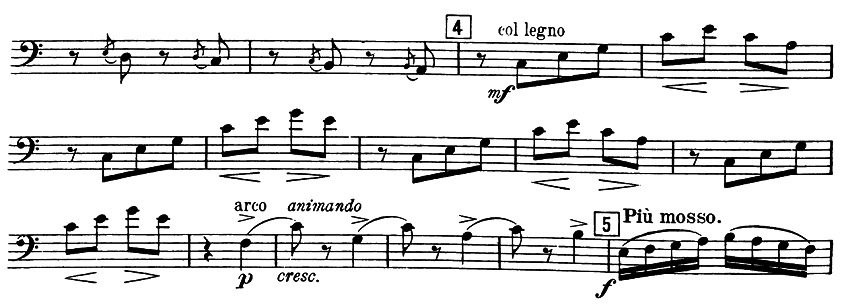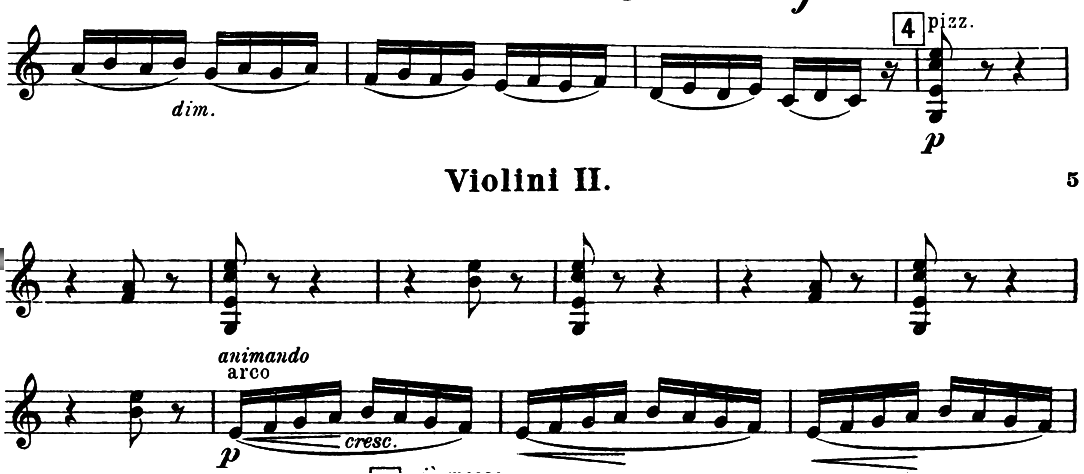Any Audio Engineers in the House?
-
I have some youtube videos that I would like to be cleaned up. There is a lot of background noise, and I wonder if anyone around here can point me in the right direction.
The videos I'm talking about are things like this:
https://www.youtube.com/watch?v=khz6d3c9Zq0
https://www.youtube.com/watch?v=4sohqyeVw0gYes, that's me on the violin before I was into computers. So sort of humblebrag. But whatever. That was a pretty good show. I'd like it to be more presentable. The noise just makes me sad. I deserve hear how awful I sound. :)
-
Audacity has a free noise removal filter, not nearly as good as the $400 one in SoundForge, and runs slow as molasses, but it does ok.
-
Thanks, Blakey. I'll check it out.
-
I deserve hear how awful I sound.
You don't sound terrible to me, but the cellist. I shouldn't criticize too much — I imagine it's fiendishly difficult to play — but those harmonics at the beginning of the first movement all sound a bit off to me. Do let us know when you post the cleaned-up versions, though.
-
I should also say: don't expect a miracle. There's really no substitute for a quality microphone set up right.
-
We had good mics. The cellist was a pain. He just refused to learn the music. It kind of sucked.
Over and over again he just fucked things up. I made plenty of mistakes myself. But that guy was awful. He made me so mad.
-
Find a noise remover which takes a short section of just the background noise (i.e. the 'silence' at the start) as input, then runs filters to attenuate those frequencies (I'll have a look at audacity..).
Once you've done that, you have the option of running it though a noise gate which cuts in at some suitably low level (say, -80dB or something like that), which will replace any remaining background noise in the 'silent' sections with digital silence, which may help remove any further noticeable noise (or it could make it sound artificial—you might want to just push the noise level down a bit more rather than eliminating it completely).
Another possibility is to run the audio through an expander set up to attenuate the quieter sections, and leave the louder sections relatively untouched. As was mentioned upthread, it really depends on the ratio of background noise level to music level—there is an upper limit to what you can hope to achieve, and if the background noise is too loud to start with, removing it too aggressively will leave you with strange metallic-sounding music which is missing frequencies it actually needed...
-
Well, it is Shostakovich. A certain amount of strange metallic-sounds are expected.

Honestly, this would be a lot more difficult with Mozart or Beethoven. It should withstand quite a lot of tinkering as it is.
Holy crap, who the fuck wants a pizza? I want a goddamn giant ass Friday night pizza. Right effing now.
-
-
Well, it is Shostakovich. A certain amount of strange metallic-sounds are expected.
Not quite metallic, but...https://youtu.be/g9lo9ZDYuDU?t=35m34s
(How many pieces do you see that call for seven percussionists?)
-
Most of the Mahler symphonies need 7 or more. Verdi's Requiem needs about 9, and that's well before Shosti 11. To do Beethoven 9 correctly needs 6. It's not that uncommon. Shostakovich uses a lot of "modern" techniques for the string players. Hitting a piece of metal isn't so revolutionary. Hitting the wood of your violin with the wood of the bow is a pretty interesting effect. Also, it makes us nervous because those things are damn expensive.
But even that isn't really new.
-
I could watch a whole video of just Scary Conductor Guy...




-
It's certainly not unheard of, but I'd say it's fairly uncommon. E.g. I'm flipping through the 1812 Overture score, and the most I see active at once is six; unless I missed something, The Firebird tops out at five; it looks like Symphonie Fantastique tops out at six although I find that score very unclear. (All of these are counting timpani.)
Hitting the wood of your violin with the wood of the bow is a pretty interesting effect. Also, it makes us nervous because those things are damn expensive.
I play this in a week from earlier this evening:
Three internet points if you can ID the piece by that snippet.

I'll be kind and show you the violin parts. :-)

 (Those're pasted together across two pages if you're curious. I was gonna put them behind `` but it didn't work...)
(Those're pasted together across two pages if you're curious. I was gonna put them behind `` but it didn't work...)
-
That guy is fun to watch.
-
Third staff, second measure, right after where it says gradually become agitated. Can any audio engineers tell me what that chord is called?
-
When did this turn into a pissing contest?
I don't know that piece by either the violin or the cello/bass parts. I can say for certain that I've never played it.
But the excessive sequences and minimal content make me think that this is probably Philip Glass. If it were good, I might venture a guess at John Adams. But I don't think it's that good.
-
When did this turn into a pissing contest?
I totally didn't intend it to be; sorry if it came off that way. (I'm pretty sure I'd lose such match; I'm not so good.) It's From The Middle Ages (Glasunov). That part's at 11:52 (and repeats some other time), though geeze is that movement fast in that rendition.
-
Cool, man. I don't know what the fuck kind of world you live in where I post videos of myself playing music, and some dickweed throws up a score to ask if I know the music, and then you don't think you are starting a pissing contest.
If you really really really need to make this thread all about you, I suggest that you post some videos of you playing some music.
We are not at all impressed by how you can't spell Glazunov.
-
Can any audio engineers tell me what that chord is called?
I'm not an audio engineer, but I believe it's called

-
-
First, that's a question for a musician, not an audio engineer. Second, the chord spans multiple staves in a way that makes no musical sense; it's musical gibberish1. Third, if we ignore the multiple-staff problem and consider all the notes in the chord as if they belonged to the bottom-most staff2, all the intervals in the chord are thirds, so it's "BANG
ALL THEEVERY OTHER WHITE KEYSstarting at F3 and proceeding upward to D13, almost 3 octaves above the limit of human hearing, and 5 octaves (+ a major 2nd) above the upper end of a piano keyboard (C8)." If, instead, the uppermost notes are considered as belonging to the uppermost staff, the uppermost note in the chord is a much more reasonable B6.1 As if the rest of it isn't, too.
2 If the notes in the vicinity of each staff are regarded as belonging to that staff, it eliminates some problems with the chord, but the notes between the staves become problematic, as there is no indication of which notes belong to which staff, and the notes are quite different if they are considered as belonging to one staff rather than the other.
Edit - PJH. Badger.
-
Enjoy your

Also, I think a cursory examination of that entire image would suggest the entire piece (as you note) is gibberish.
-
I just realized I didn't actually answer the question. It would be, assuming as above that all the notes belong to the bottom-most staff, an F71 chord. The bottom three notes comprise an F-major chord. Adding the next note makes an F7. Adding the fifth note makes it an F9, and so on.
-

-
I Jeffed 4 posts to an existing topic: The One With @HardwareGeek's Pedantry (Again)
-





